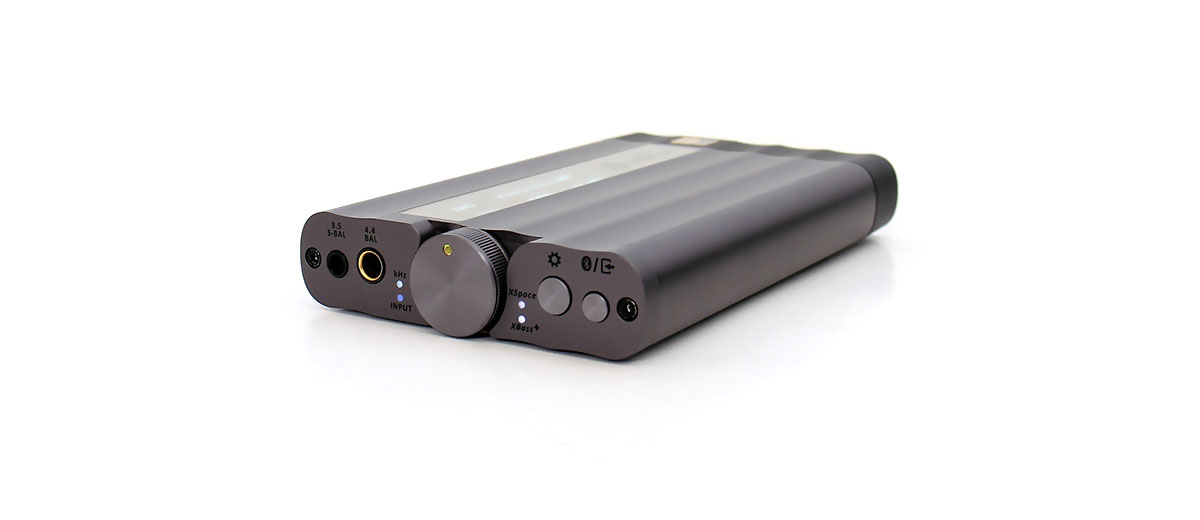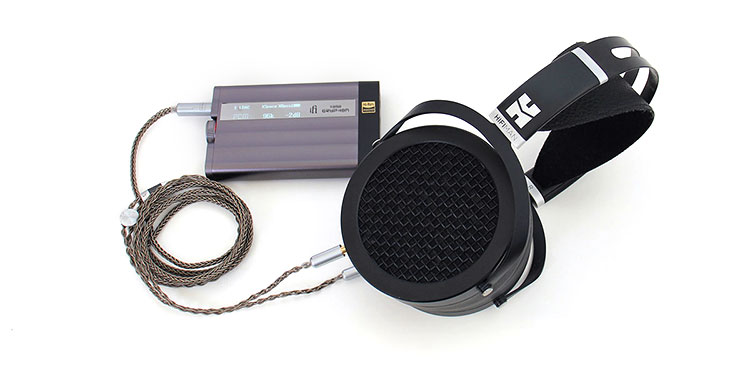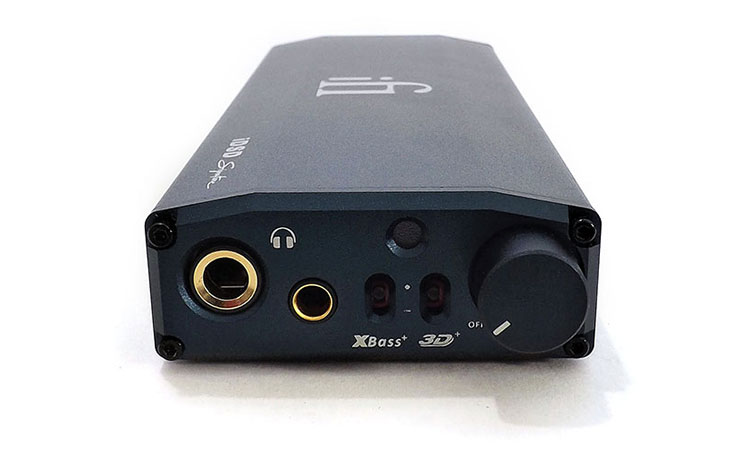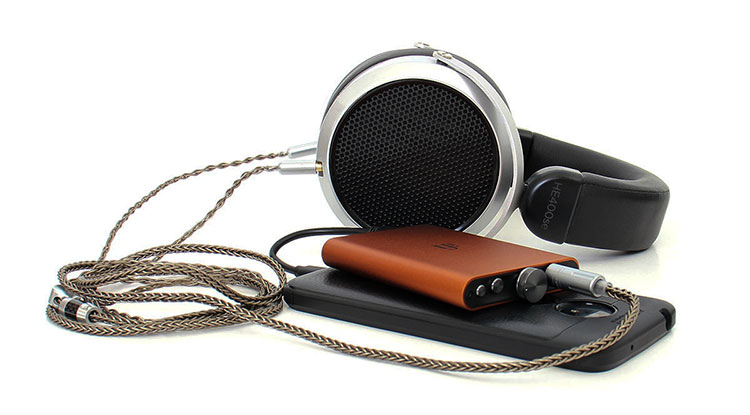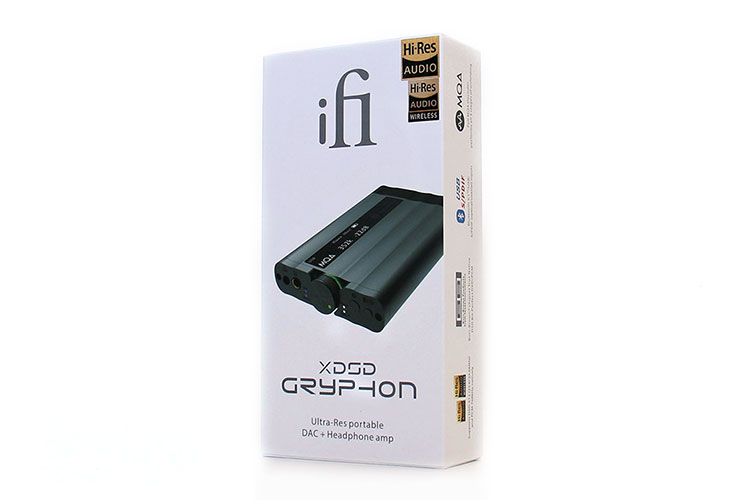Sound Impressions
I mostly did my listening with the DAC on bit-perfect mode to keep things as pure as possible and unaltered from the source. What I found was that the traditional iFi signature has carried over to the xDSD Gryphon since it uses the common iFi OP amps and Burr brown chips with the XMOS system.
I do like the sound signature. It seems to project realistic toned vocals while also supplying tight and punchy bass lines that fatten up when called upon but you can always elevate the bass some by engaging the Xbass 2 feature if you find the bass to be too clinical or lean sounding. Who says music has to be heard flat all the time?
The high frequencies are lean sounding which is a desired trait that gives them a crystalline character with lots of sparkle and shimmer. Things like cowbells and triangles come through in a luculent manner. Overall good frequency extension and tonal balance can be used to describe the Gryphon sound signature.
If you look at the frequency response specification which is 20Hz to 90kHz, my observation of that gives me the impression that iFi is aiming high, no pun intended.
Or in other words, they are looking to extend that top range and although the sound signature retains the characteristics of a typical iFi gear, the high frequencies seem better extended compared to previous iFi units from yesteryear.
Staging & Dynamics
Distortion and the noise floor seem very low and the xDSD Gryphon displays a rather dark background. Some faint hiss is present but the IEMatch feature helps out with that if you decide to pair the Gryphon with very sensitive and hiss-prone IEMs but, to be honest in my case the noise was very low.
I do prefer an amplifier section that has a fistful of punchy dynamics along with an ample amount of attack and decay which are some of the other characters the xDSD Gryphon portrays. Who doesn’t like that? The transient response also seems quite excellent.
Lots of nuances come through in the form of detail revelation with an added bonus in the form of a very good soundstage that seems realistic in size and placement. But just as you can add some bottom end with the Xbass 2 you could also add more spaciousness and width by activating that XSpace feature.
The only audible negativity I found on the xDSD Gryphon was a thump when you work the Xbass and XSpace buttons to activate those features. It doesn’t happen when you long-press the button to activate the on-screen menu. It just happens when you push to engage the Xbass.
Synergy
Efficiency
Most of the time the xDSD Gryphon runs cold to the touch and it seems to use power efficiently. It seems like a very efficient unit that is easy on battery life even at loud volume levels with Xbass activated and running off Bluetooth all at the same time.
Speaking of battery life, I got a solid seven hours plus using some 16Ω IEMs and on Bluetooth running LDAC. I’m sure you can do better if you downscale the codec or use the Gryphon as a USB DAC or further moderate the volume level. It takes around two and a half hours to fully charge the battery from empty to full.
Power
The less than 1Ω output impedance seems to keep the xDSD Gryphon efficient enough to launch clean power into your cans. Enough so, that I was able to power a can like the HIFIMAN Arya which is fairly hard to drive. Of course, I used the balanced output for this test.
If you have 600Ω headphones then I probably would not recommend the Gryphon to you but then again, who buys 600Ω cans for portable use? I would use almost any dynamic but would restrain myself pairing the Gryphon with the top and hardest-to-drive headphones.
Pairings
I have several full-sized headphones lying around here and the hardest to drive correctly is the Arya. I have the second version with the cloth back which is not as efficient as the stealth version.
With this setup, the combo was less effective compared to let’s say a combo with a Sundara or an Edition XS which is more efficient but the xDSD Gryphon combined with the Arya was definitely listenable still.
One of the dynamic driver headphones I used with the xDSD Gryphon was the Grado SR80x which is very efficient but bass neutral. The Xbass 2 plus the XSpace engaged worked out very well with the SR80x. It filled in that bottom end nicely and gave them some well-received added width and warmth.
Select Comparisons
iFi Audio Micro iDSD Signature
$649
Technical
The iFi Audio Micro iDSD Signature of the Sig as I affectionately call it is one of the best portable DAC amplifiers you could buy for the asking price but it’s not marketed as a portable device.
In fact, it’s a desktop unit with portable capability. The battery is used as a power buffer and the unit receives power from the battery directly to avoid using noisy AC to DC conversion circuitry.
The chassis style and most of the circuitry inside the Sig is more in line with the Black series while the xDSD Gryphon borrows circuitry from the Diablo, the NEO, and is fashioned after the xCAN in reference to body design.
Design
The longer body style of the Micro iDSD Signature might not be the most ideal design for portable use and is certainly not as pocket friendly. Since it has no Bluetooth you must rely on wire hookups and that is another missing feature.
Most of the good features between the two however are similarly implemented on both units like the selectable DAC filters, IEMatch and Xbass but the latter is updated to version 2 on the xDSD Gryphon. To be honest I could not tell much of a difference between Xbass version one and version two. I love them both equally.
You could alternately get an xCAN to gain Bluetooth and call it a day and it would actually make a good alternative to the xDSD Gryphon but I would advise getting the xDSD Gryphon if you can since it has the 16 core XMOS, LDAC on the Bluetooth, and some other internal tweaks which definitely makes it a more future proof unit.
These two designs are very contrasting. The Micro iDSD Signature series design resembles a small power inverter or somewhat of a mobile high-power amplifier but the design lacks the adroitness of the xDSD Gryphon overall.
Performance
Raw power on some occasions is preferable especially if you have a large collection of headphones and have some hard-to-drive models. In that case, the Sig will win all day long in drivability particularly, but the Gryphon edges out the Sig far as treble response, features, and output cleanliness.
To my ears, the xDSD Gryphon has better high-frequency extension but it still manages to retain a similar iFi signature that is dark and warm.
I do like the Sig best when it runs on the GTO filter which is the best at soundstage particularly, however, to me the xDSD Gryphon sounds best when the DAC is on bit-perfect mode and DAC setting does not affect its soundstage and just the clarity in tonality.
iFi Hip-dac2
Price $189.00
Technical
These two are not brothers, they are cousins. They share some similar circuitry tricks and components but the Hip-dac2 is a basic USB digital-in and headphone-out unit with analog volume control, Xbass, and is battery powered and designed to complement a phone but I guess you could use it on a desktop if you desire or better yet with a laptop.
Technically you could use the Hip-dac2 at home but the Hip-dac2 flask style chassis was made to be taken outside. The 2200mAh battery helps with that endeavor plus the weight is around half at 125 grams versus Gryphon’s 215 grams.
Design
The Hip-dac2 is probably the most basic way you could get the iFi sound profile in a portable DAC amplifier configuration. They both use similar OP amps and share some components but the xDSD Gryphon is more intricate and detailed with a higher count of internal components.
The flask style chassis is easy to carry around, has some similar features like the balanced 4.4mm out plus a 3.5mm with S balanced, Xbass, and a 16 core XMOS processing unit but the amplification section is downsized on the Hip-dac2 and tops out at a maximum output of 400mW off the balanced side and 280mW off the 3.5mm end at the same 32Ω.
The Hip-dac2 substitutes the IEMatch system for what iFi calls PowerMatch which works at the impedance level in combination with the gain level to optimize the amp stage according to the load seen. What’s the difference? We’ll save that discussion for another occasion.
Performance
The Hip-dac2 sounds more similar to the GO blu probably due to the power output being similar and the design topology is also similar except for the 16 core XMOS and Bluetooth. If you use the single-ended ports you could barely tell the difference between the two.
To me, the Hip-dac2 has a more familiar iFi sound characteristic compared to the xDSD Gryphon which aims for higher frequency extension with a cleaner, darker background.
The Hip-dac2 sound signature is more in line with the Black edition while the xDSD Gryphon is very similar to the NEO in tonality which aims for a super clean character that attempts to be close to neutral as possible.
I would just recommend the xDSD Gryphon over the NEO but there is something special about the DAC inside the NEO that when paired with a more powerful amplifier merits some credit. The addition of the Xbass to the Gryphon signature just adds more fun factor to the NEO character but in a portable format.
The Hip-dac2 has a more forward presentation, especially in the midrange and although the Hip-dac2’s frequency response is very wide, the Gryphon has the edge far as extension and power output but also lower distortion levels, noise floor, and audible hiss.
Our Verdict
The iFi xDSD Gryphon is one of the most versatile units to come around plus it offers high compatibility far as digital formats and Bluetooth codec capabilities are concerned.
Not only that but it can act as a standalone DAC, a standalone headphone amplifier, it can play the part of the preamplifier and you could also use it to stream Bluetooth audio to it up to LDAC and play it back through either through one of the headphone outs or through one of the line or digital outs and out to other components.
You would have to get a few separate components to obtain similar flexibility. All these features and then some are crammed within the xDSD Gryphon and considering it’s a portable device I sit here thinking what could come next.
To be honest I care not what comes next on the market at this point because, besides the slight thump on operating the Xbass switch, the xDSD Gryphon is an almost, almost perfect portable solution that can go beyond its duty by also functioning as separate components. The excellent sound quality is just the cherry on top.
iFi Audio xDSD Gryphon Specifications
- Inputs USB -C
- Bluetooth 5.1 (aptX, aptX HD, aptX Adaptive, aptX LL, LDAC, HWA, AAC and SBC Codec)
- S-PDIF Coaxial
- Balanced 4.4mm
- Single-Ended 3.5mm
- Formats DSD DSD512/256/128/64, Octa/Quad/Double/Single-Speed
- PCM 768/705.6/384/352.8/192/176.4/ 96/88.2/48/44.1kHz
- DXD 768/705.6/384/352.8kHz, Double/Single-Speed DXD
- MQA 384/352.8kHz
- Bluetooth Up to 96kHz
- DAC Bit-Perfect DSD & DXD DAC by Burr-Brown
- Line Outputs Balanced 6.7V max. (variable)
- UnBAL 3.5V max. (variable)
- Output Impedance Balanced ≤200Ω
- UnBAL ≤100Ω
- SNR Balanced <110dB(A) @ 0dBFS
- UnBAL <110dB(A) @ 0dBFS
- THD+N Balanced <0.007% @ 0dBFS
- UnBAL <0.015% @ 0dBFS
- Headphone Outputs Balanced 6.7V max. @ 600Ω
- UnBAL 3.5V max. @ 600Ω
- Output Power Balanced >1000mW @ 32Ω;>74mW @ 600Ω
- UnBAL >320mW @ 32Ω;>40mW @ 300Ω
- Output Impedance Balanced <1Ω
- UnBAL <1Ω
- SNR Balanced <116dB(A) @ 0dBFS
- UnBAL <115dB(A) @ 0dBFS
- THD+N <0.005% (1V @ 16Ω)
Power System
- Charging via USB-C, BC V1.2 compliant up to 1900mA charging current
- Dimensions 123 x 75 x19 mm 4.8″ x 3.0″ x 0.7″
- Weight 215 g 0.5Ibs

